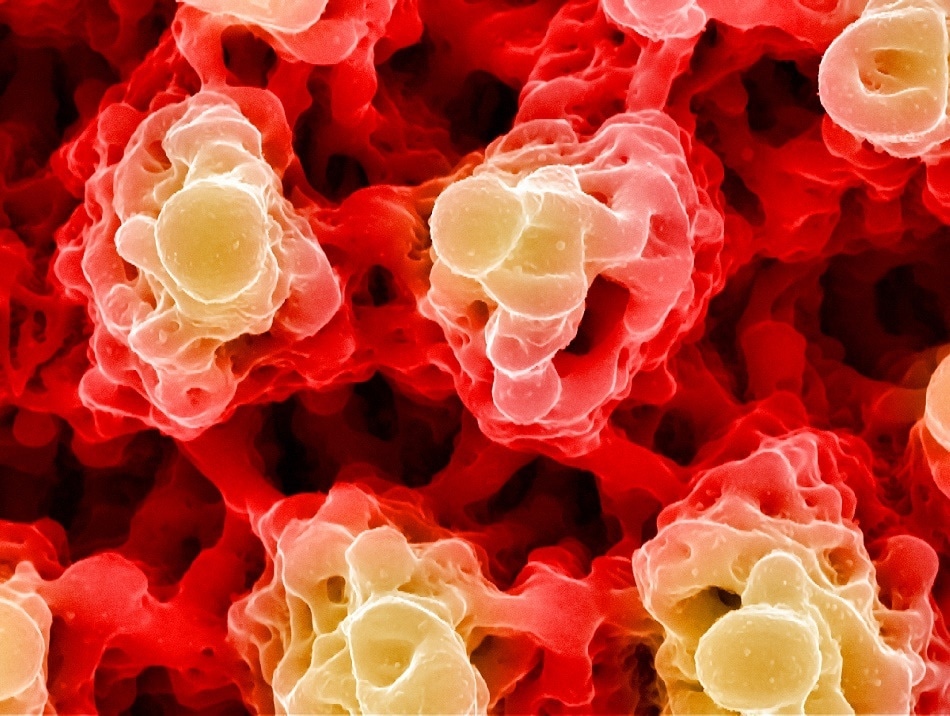
Image Credits: Georgy Shafeev/shutterstock.com
AFM has emerged over the last few decades to be a vital tool for measuring the topography and properties of a sample and has vastly expanded its capability over the years. Optical tweezers have also been around for many years and can be used to manipulate and measure the properties of materials at the single atom level. Now, it has emerged that AFM can be combined with optical tweezers to perform more efficient force measurements in biological studies. In this article, we look at this combination.
What is AFM?
AFM, which is shorthand for atomic force microscopy, is an instrument that uses a sharp tip at the end of a cantilever to map the topography a surface. In basic terms, there are many different imaging modes, some of which touch the surface and some which hover over the sample, and the movement of the cantilever enables the relative position of atoms of a surface to be mapped. Whilst AFM is best known for mapping the topography of a surface, many different modes have emerged over the years that can measure the electrical, optical and mechanical properties (among other sub-properties) of a sample. It is a powerful imaging technique that can be used with a wide variety of materials, and its versatility is one of the many reasons why it has become a tool that has been used more and more by scientists over the years.
What are Optical Tweezers?
Optical tweezers use light to manipulate objects down to the single atom level. Optical tweezers work by trapping atoms, particles or microscopic organisms and can be used to deduce the mechanical properties of the captured object. Optical tweezers use light from a laser to trap these objects and the refraction and scattering of the light can tell scientists a lot about the force and mechanical properties of the object. Once trapped, the object will become displaced from the center of the light beam, and this enables the deduction of the force properties of the object. In some cases, optical tweezers can continuously trap microscopic objects by pulling them back in once they have been displaced from the center, and this process can be used to manipulate and move the object. Whilst they are used in many areas, they have found a lot of use in biological studies.
Combining the Two
Both AFM and optical tweezers can be combined, and this is known as OT/AFM. It is a technique that combines the surface force measurements and imaging capabilities of an atomic force microscope with the ability to apply and measure the smallest degree of force in three-dimensions through the optical tweezers. OT/AFM is a technique that has a lot of potential, much like optical tweezers, for biological studies. Many modes of AFM are not suitable for biological studies, other than non-contact mode, as the tip will damage the sample. Because not contact mode doesn’t physically apply a force on the sample, it makes it harder to obtain force measurements, so OT/AFM has emerged as a way to fill this need.
In OT/AFM, optical tweezers hold biological molecules in place at either one or two ends while the cantilever scans over the surface of the biomolecule. Both AFM and optical tweezer principles are used simultaneously and the laser light for the optical traps is often shone through an inverted objective below the sample of interest. It produces a synergistic process where the AFM instrument acts as a force and spatial sensor while the optical tweezer(s) act as the manipulator.
It is a process that can be used to unzip fibers and DNA by trapping the molecule at one end and attaching another molecule to the end of the AFM cantilever which will adhere to the fibrous molecule. This is a process that enables the mechanical properties of fibers and DNA to be deduced. The molecule can be unzipped or defibered by twisting the molecule, and because it is held in place at one end, the other end unwinds/unzips. As far as other applications regarding DNA goes, DNA with proteins attached can be clamped at either end and scanned with the cantilever to see where the proteins lie in the DNA strand, and DNA-enzyme dynamics can also be monitored by trapping one strand of the DNA helix.
OT/AFM can also be used on cells and for triggering responses in cells. OT/AFM can be used to measure the mechanical properties of cells by exerting a force and imaging the internal rearrangement of the cell, as well as for measuring the cellular response, cell-cell interactions, cell-matrix interactions, immune response, infection response, and the uptake of foreign media (such as nanoparticles or bacteria) into the cells. The optical tweezers can also be used to trigger specific responses by trapping certain cells and seeing how these cells adhere to other molecules by measuring the force from a molecularly modified cantilever as it is pulled towards the trapped cell.
Sources and Further Reading
Disclaimer: The views expressed here are those of the author expressed in their private capacity and do not necessarily represent the views of AZoM.com Limited T/A AZoNetwork the owner and operator of this website. This disclaimer forms part of the Terms and conditions of use of this website.